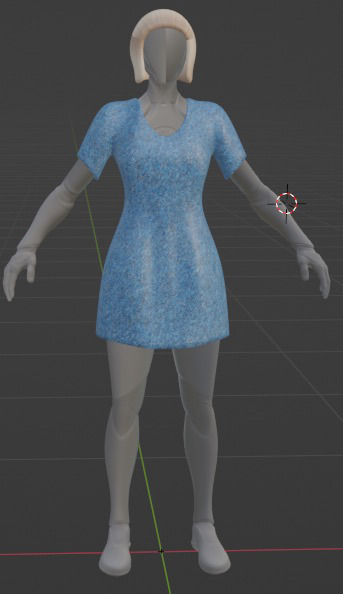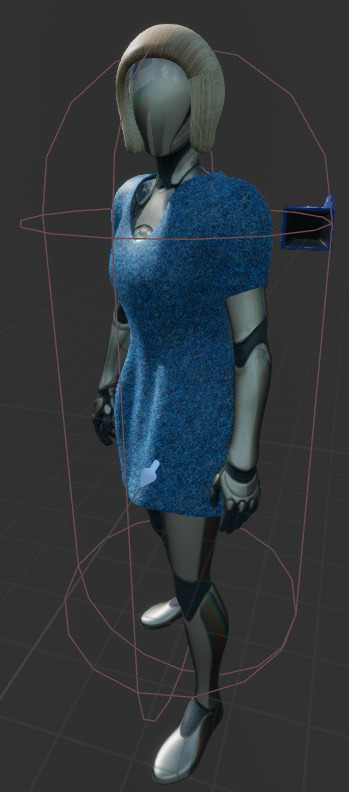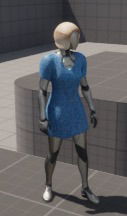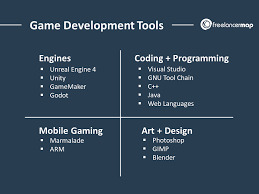#gamedevtools
Explore tagged Tumblr posts
Text

My new asset pack with over 600 items is ready for download! Here > Click Me!
#pixel art#pixel graphics#PixelArtAssets#RPGMaker#IndieDevTools#GameAssets#16x16#PixelArtCommunity#GameDesign#IndieGameDev#RPGGameDev#GameArt#IndieGame#SurvivalGames#GameDevelopment#PixelArtResources#GameDevTools
4 notes
·
View notes
Text
How Cloud Technology is Transforming Game Development
The gaming industry is evolving rapidly, and one of the biggest driving forces behind this transformation is cloud technology. From development pipelines to player experiences, the cloud is reshaping how games are created, distributed, and enjoyed. For studios, embracing cloud-based solutions isn’t just a tech upgrade—it’s a strategic advantage that can boost collaboration, scalability, and innovation. In this article, we explore how game development is being revolutionized by the power of the cloud.

1. Streamlined Collaboration Across Teams
Traditional game development often required large, on-premise hardware setups. Developers had to work within physical studios, syncing assets manually and dealing with file versioning headaches. Cloud technology eliminates these constraints by enabling remote collaboration in real time.
With cloud-based version control, storage, and asset management tools, developers, artists, designers, and QA testers can work together from anywhere in the world. Studios can tap into global talent without worrying about infrastructure limitations.
Example tools: Perforce Helix Core Cloud, GitHub, Unity Collaborate, AWS Cloud9
2. Cloud-Based Game Engines and Development Platforms
Many game engines and development tools now offer cloud-hosted services, reducing the need for powerful local machines. Developers can render complex scenes, simulate physics, or compile large projects on cloud servers, drastically speeding up workflows.
Cloud rendering also enables indie developers and small teams to access high-performance tools that were once exclusive to AAA studios.
Example platforms: Unreal Engine Pixel Streaming, Unity Cloud Build, Amazon Lumberyard
3. Global Game Testing and Deployment
Testing a game across multiple regions, devices, and connection types is critical for launch success. Cloud technology allows developers to simulate different environments without setting up physical test labs.
Cloud-based testing platforms automate QA processes, monitor gameplay analytics, and provide instant feedback. Additionally, deploying updates or patches via cloud infrastructure ensures faster rollouts to global player bases.
Benefits:
Faster bug detection
Reduced server downtime
Scalable deployments across platforms
4. Enabling Cloud Gaming and Streaming
On the player side, cloud technology powers the rise of cloud gaming—allowing users to stream games without downloading or installing them locally. Services like Xbox Cloud Gaming, NVIDIA GeForce NOW, and Google Stadia demonstrate how the cloud can deliver high-quality gaming on low-spec devices.
For developers, cloud gaming expands audience reach by removing hardware barriers. Games optimized for cloud streaming can reach casual players who wouldn’t invest in consoles or gaming PCs.
Impact on game development:
Focus on network optimization
UI/UX tailored for various screen sizes
Cross-platform accessibility
5. Scalable Multiplayer and Live Service Infrastructure
Multiplayer gaming relies on servers that can handle dynamic player loads. Cloud infrastructure offers elastic scaling—automatically allocating resources during peak hours and scaling down during off-peak times.
For live service games, cloud technology enables real-time updates, events, leaderboards, and matchmaking without disrupting gameplay. Developers can also leverage data analytics from cloud platforms to fine-tune balance, track engagement, and personalize player experiences.
Popular solutions: Google Cloud for Games, Azure PlayFab, Amazon GameLift
6. Lowering Barriers for Indie Developers
Perhaps one of the most exciting impacts of cloud technology is how it democratizes, Small studios and solo developers can now access enterprise-level tools, storage, and distribution channels without upfront hardware investments.
Cloud-based marketplaces, app stores, and digital distribution platforms make it easier for indie games to launch worldwide with minimal infrastructure costs.
The Future of Cloud in Game Development
Cloud technology isn’t just a support system—it’s becoming the backbone of modern game development. As 5G networks expand and cloud computing grows more powerful, expect deeper integration of cloud AI, machine learning-driven game testing, and even AI-generated content in future games.
For developers, adopting cloud solutions means greater flexibility, scalability, and creative freedom. The studios that leverage these innovations will be best positioned to lead in an increasingly competitive industry.
#GameDevelopment#CloudGaming#CloudTechnology#GameDevTools#MultiplayerGames#GameDevInnovation#GameEngines#GameStreaming#IndieDev#FutureOfGaming
0 notes
Text
Goodbye SPM Hello Unreal Engine
After a few days of solid thought, I decided to completely shelve SPM for now. It really breaks my heart, but I’ve gone over my contract with a fine-tooth comb and there is most likely no way to break it since I’m in the US and they are in China. I signed my rights away. Thank goodness I didn’t do that with Aden’s Adventure. The thing with Zoe’s is it’s actually pretty generic. Unless my editor, who has mysteriously vanished like a side quest NPC, can talk me into continuing, I’m done with SPM.
Update: I talked to my editor and decided that I’m going to finish the current storyline, then shift into the endgame—when I’m back in the mood for writing again. So, SPM will update once more, but I’ll wrap it up with a thrilling, full-stakes, all-or-nothing, multi-team battle royal. Think Hunger Games meets Mario Kart chaos.
In the meantime, I’ve moved on to a new project: Zanden’s Unreal Engine Clothing System.
Below, I've included images of the development of the bare-bones clothing system. At the top is the UE 5.5 mannequin wearing the nightshirt and wig I whipped up in Blender. It only took me about two hours from start to completion, but then it took another half hour or so to get it into Unreal. Updating the 4.27 blueprint to 5.5 took an additional two hours. Below that, on the left, is the clothing in the third-person blueprint. The right-hand image shows the clothing in-game. I could have made a camera boom or adjustment to zoom it in, but I want to keep the initial state of the template as much as possible so future users can buy and study it.
Since an old friend never replied, I’m assuming he either vanished into the void or got swallowed by a wormhole. It’s been pre-Covid since I heard from him, so I think it’s been long enough to officially claim rights to the clothing system we worked on together. With ChatGPT’s help, I’ve updated it to version 5.5. Now, it just needs a polish pass, a shiny interface, and a fail-safe to prevent people from doing silly things—like adding multiple hairstyles at once. (Because we all know someone would try.)
After browsing the marketplace, I couldn’t find a quality clothing system. That’s my cue. I’m thinking of offering two versions: a basic version for the casual devs and a pro version for the hardcore creators. Who knows? Maybe this is my ticket to finally making something worthwhile—and profitable.
Keep an eye on my BlueSky for updates at insanexade.bsky.social, and if you’d like to be part of the testing or just want to drop by and say hi, you can catch me on my Discord server at discord.gg/JKKQENM. I’d love to hear from you!



#SnackPoweredMage#CreativeJourney#IndieDevLife#UnrealEngine5#ClothingSystem#GameDevTools#BlenderCreations#IndieMarketPlace#DevCommunity#ZandensProjects#BlueSkyUpdates#DiscordCommunity#GameDevelopment
0 notes
Text
Butler
Using Butler, made by itch.io, to upload new versions of my games to itch.io. Rating: 16 frogs
0 notes
Link
This is a fantastic tool which I recommend everybody check out and utilize it where they can. I will be more in the future. Thanks Paletton!
1 note
·
View note
Text
A new engine?
I started using Unity in 2011. And from then on, other than the occasional dabble into Game Maker, Unity + C# is my go to for making games. It’s not the BEST GAME ENGINE EVER! But it gets the job done, and is easy to use.
But for the last few months, I've been thinking about moving on to something else(I can do another wall of text for this). And so, for Ludum dare #42, I decided to try a new game engine. Was split between Defold and Godot. Some of the considerations I had were:
Pricing
Proprietary[Defold] vs Open source[Godot]
Updates
Lua[Defold] vs engine’s custom script[Godot’s gdscript]
Engine workflow
Store/social integration APIs
Support for mobile
Ability to extend the engine, using other libraries e.g. OpenCV, native iOS/ android features
Help and tutorials
In the end I picked Defold mainly for this 2 reasons. 1) I'm not comfortable relying on Godot to make games that are for commercial purposes. 2) Lua > engine's own custom script. I'll take a more well established scripting/programming language over anything else. Which is also why I do not use Game maker.
And here is the game we made using Defold(engine) + Affinity designer(art) + Spine (animation).
Sweatin’ Spinnin’ Spacin’

https://blu3bird.itch.io/sweatin-spinnin-spacin
Knowing that we probably shouldn't do anything too complicated, this is what we came up with. I will discuss about my experiences with Defold in a later post.
2 notes
·
View notes
Photo

Spent a week working on a tool to spit out my sprite atlas stuff. The major problem that I have is that I can't just half-ass things and make it just work, I need to turn it up to 11 and make something that's completely over the top. At least it looks nice, I guess. Made this using WPF/C#, pretty simple.
0 notes
